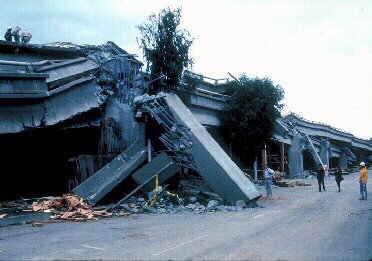Last year was supposedly the last chance. Approve the Roads & Transit ballot measure, supporters said, or forever be stuck in gridlock.
Voters said no, but already, light rail is back. On the ballot Nov. 4 is a smaller, $17.9 billion, transit-only plan to build a light-rail system that would carry commuters north to Lynnwood, south to Federal Way and east to the Overlake Transit Center, near Microsoft. Commuter trains south of Seattle would nearly double in capacity and express-bus service would increase.
"We're getting a clean shot to take our case to the voters," said Ric Ilgenfritz, Sound Transit's planning and policy director.
With road building out of the picture, the transportation debate has a new focus. The questions now: Is it right to invest mainly in light rail — more than $12 billion — instead of buses? And does the rough economy make this the wrong time to raise the sales tax?
Proposition 1, on the ballot in urban areas of King, Pierce and Snohomish counties, calls for raising the sales tax 0.5 percent, or a nickel per $10 purchase.
A sales-tax boost is worth it, backers say, because a rail system would carry hundreds of thousands of riders, and trains don't get stuck in traffic.
Sound Transit Chairman Greg Nickels, Seattle's mayor, says the lines would reach 70 percent of the urban areas' residents and 85 percent of the jobs.
But such numbers assume commuters in outlying areas will travel up to two miles to a park-and-ride lot. Planners haven't yet figured out how to get people to the stations, whether that involves bikes, carpool lanes, shuttle buses or something else.
The train stops won't be convenient enough to serve most commuters, argues Belltown resident Mark Baerwaldt, treasurer of Notoprop1.org. "That's only if you've got a jet pack," he says.
Other critics, such as former Supreme Court Justice Phil Talmadge, of West Seattle, and King County Executive Ron Sims, say buses could be deployed sooner and go more places. Because light rail would cost around $300 million per mile to construct (including inflation), places such as Everett, Issaquah, downtown Redmond, Renton, Kirkland, Ballard and West Seattle would have to wait for future light-rail extensions.
On the other hand, the train routes include places where cities are trying to cram in more people, such as Seattle's Northgate neighborhood and the Bel-Red Road area east of downtown Bellevue. Redevelopment is already happening fast in the Rainier Valley, where the first light-rail line opens next year.
The measure is backed by the Sierra Club, several environmental groups and many well-known elected officials.
Yet voters' attention this year is largely consumed by national and state races. The pro- and anti-Proposition 1 campaigns expect to spend only one-fourth of what they did last year.
So far, the "yes" side reports $755,035 in contributions, led by companies that profit from rail projects, including engineering firms CH2M Hill and Parsons Brinckerhoff at $40,000 each. Opponents report $152,525 in donations, led by $100,000 from Bellevue mall developer Kemper Freeman, a longtime roads advocate.
A new twist this time is the fear of a long recession, as illustrated by the panic on Wall Street and rising unemployment.
"This is absolutely the wrong time to raise taxes on working families," said Baerwaldt, an investor who also led last year's opposition campaign.
A few ads with that theme, now airing on radio stations, are all the "no" campaign needs to win, he said. They include "ka-ching" cash-register sound effects to emphasize money leaving taxpayers' wallets.
"We're not going to waste a bunch of money defeating something that's going to go down in flames," Baerwaldt said.
Alex Fryer, spokesman for Mass Transit Now, the main pro-Proposition 1 campaign, replies that at an average yearly cost of $69 per adult, in the range of a tank of gas, the measure is a good investment in new transit options.
And lately, supporters have started positioning the rail plan as a kind of New Deal, to create thousands of construction jobs.
"Starting now will probably mean this is the cheapest time in the near future that we can build," because of lower land prices and a looser market for labor and contractors, argues Ben Schiendelman, a writer for Seattle Transit Blog.
If the economy does drag down Proposition 1, the logical time to try again would be 2010, after people can see and ride Sound Transit's initial line from downtown to Seattle-Tacoma International Airport.
But Schiendelman insists that this year, "We're not going to lose."
Mike Lindblom: 206-515-5631 or mlindblom@seattletimes.com









